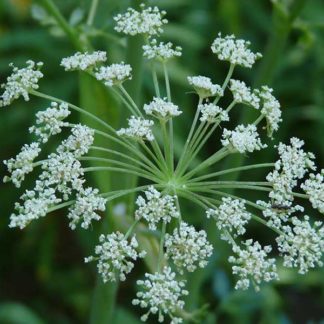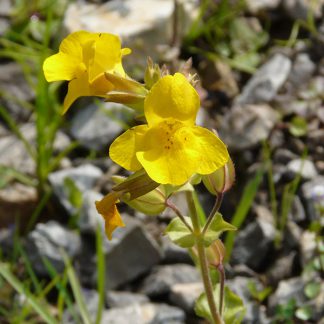fen
Showing 1–12 of 32 results
-

Allium schoenoprasum / chives
- globe-shaped umbels of pink flowers with darker midveins (stripes)
- hollow, tubular leaves and flower stalks
- smells like onions
- grows from bulbs in clumps or sometimes individually
- wild in wetlands, fens, meadows; cultivated in gardens
-

Angelica arguta / Lyall’s angelica
- white to yellow to pink-ish
- compound umbel with teeny individual flowers
- many-toothed compound leaves with sheath surrounding petiole
- leaflets egg-shaped to narrowly oval
- pungent parsley/celery/anise scent when leaves crushed
-

Argentina anserina / silverweed
- silvery, compound leaves on low, creeping stems
- yellow, 5+ petaled flowers; lots of stamens
- fens, other wetlands, but also roadsides
-

Betula pumila / bog birch
- limited to bogs/fens/swamps and wetlands
- shrub to about 6 feet tall
- reddish bark on twigs
- leaves rounded-fan shaped, ca. 1 inch; coarsely toothed
- inflorescences - catkins (cone-like); separate male and female
-

Carex spectabilis / showy sedge
- roadsides or in wet and seasonally flooded meadows
- showy inflorescences... yellow (stamens) above white (stigmas) on a purple background
- grass/iris-like leaves up to 2 feet tall
-

Cicuta douglasii / water hemlock
- HIGHLY TOXIC
- primarily on continuously wet soils, e.g. ditches, stream banks, pond margins, marshes.
- white compound umbel inflorescence typical of the Apiaceae/Umbelliferae
- multiply compound leaves with prominent veins ending in notches between lobes
-

Collinsia parviflora / maiden blue-eyed Mary
- inconspicuous
- teeny blue and white flowers, singly or in small clusters
- reddish stems and buds more visible than the flowers
- wide variety of habitats, bare rocks to marshy fens
-

Cornus sericea / red osier dogwood
- shrub with opposite branching and red bark, brightest in fall/winter
- common along streams especially
- small white flowers, 4 petals, in clusters
- white or blue-ish white berries in fall
- opposite leaves with parallel veins
-

Dodecatheon pulchellum / shooting star
- five pink to lavender lobes projecting backwards
- white or yellow petal bases above a squiggly purple ring
- anthers joined into a projecting point; stigma projecting past the point
- snowmelt to early spring
- wet meadows to sagebrush communities
-

Equisetum arvense / field horsetail
- segmented brown stems with spore-bearing "cone" at the tip
- or - segmented green stem with thin green branches radiating from nodes
- distinctly visible nodes along the stems
- no leaves or flowers
- found in many different habitats
-

Eriophorum angustifolium / narrow-leaved cottongrass
- limited to bogs/fens with standing water
- "just a pointy-leaved plant" until the fruit develops
- fruits are big white, cotton-like tufts
-

Erythranthe guttata / seep monkeyflower
- yellow flowers with red spots in clumps of 5 or more
- flowers large for the plant, but otherwise "normal" size
- two "lips" - lower lip larger than upper, each with 2 petals
- found in wetlands of all kinds
Showing 1–12 of 32 results